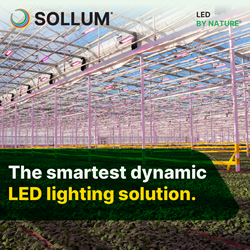AeroFarms Danville, Now Growing: Debut of The World's Largest Aeroponic Smart Farm
Four Strategies for Food Supply Chain Management
Plenty Building World's Largest Indoor Vertical Farm Campus
How to Use Data Collection for Cannabis Cultivation
Sustainable Packaging for Fresh Produce
Freight Farms Partners with Biosphere 2 to Pioneer the Future of Indoor Agriculture
Grow Room Ventilation: The Pros and Cons of Positive vs Negative Air Pressure
Avocados: Better Crop Quality and 40% Production Increase with Nanobubble-Infused Irrigation Water
Lighting Solutions for Horticultural Applications
Why Farmers Should Reconsider Pesticide Use - The Value of Pest Monitoring for Sustainability
Cranberry Farm Goes High-Tech
Precision Fertilization Protects Groundwater
4 Things To Consider When Comparing LED Lighting Systems
Vietnam Farmers Adopt XAG Agricultural Drone to Reduce Costs of Rice Production
Data and Connectivity, The Key to Agriculture 4.0
Records 706 to 720 of 1812
First | Previous | Next | Last
Featured Product

